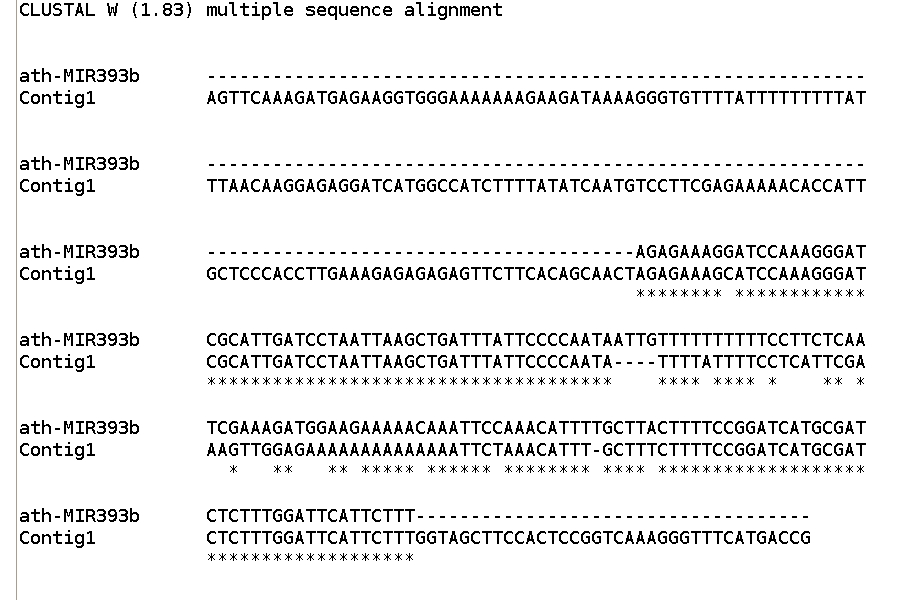使用python进行ClustalW格式和aligned FASTA格式转换
Jun 05, 2008ClustalW格式是多序列比对程序CLUSTAL W的默认输出格式,大概是这个样子:

Aligned FASTA格式是多序列比对程序MUSCLE的默认输出格式,与一般的FASTA格式很相似,只是根据比对结果在序列中填充“-”,使所有序列长度相同,例如:

Aligned FASTA格式更便于机器阅读,而ClustalW格式是比较人性化的 ,使用者可以直观地看到相同和不同的区域。
由于MUSCLE程序的profile alignment功能需要aligned FASTA格式的输入,因此我写了以下一段简单的python代码,把ClustalW格式转换成aligned FASTA格式:
#!/usr/bin/python
#Usage: python clw2afa.py input.clw
#Default output is STDOUT, you can redirect using '>'
#You can also import it as a module, i.e. import clw2afa
import sys
import re
def clw2afa(filename):
pat=re.compile('(S+)s+(S+)')
f=open(filename)
header=f.readline()
if not header.startswith('CLUSTAL') and not header.startswith('MUSCLE'):
sys.exit("clw2afa.py:Wrong input file type.")
ln=f.readline()
while not ln.strip():
ln=f.readline()
seqdict={}
EOF=False
while ln:
m=pat.search(ln)
if m and not '' in ln:
seqdict[m.group(1)]=m.group(2)
ln=f.readline()
elif not ln:
EOF=True
break
else:
break
if not EOF:
while True:
ln=f.readline()
if not ln:
break
m=pat.search(ln)
if m and not '' in ln:
seqdict[m.group(1)]+='n'+m.group(2)
f.close()
output=''
for k,v in seqdict.items():
output+='>%sn%sn'%(k,v)
return output
if name == "main":
import sys
tt=clw2afa(sys.argv[1])
print tt
写得有点混乱,希望大家如果使用的话把BUG报告一下^^